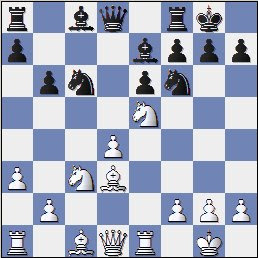Specialization
Today I want to talk about something called Specialization.
What is Specialization? Online dictionaries carry the definition as "to pursue some special line of study, work, etc.", and that is the definition we mean for the most part. In our chess-world, we want to 'specialize', or study, a fairly common position in chess. By study I mean deeply analyze and play from both sides for an extended number of times until all facets of the position have been revealed. Let's look at an example straight from the Lev Alburt's book "Building Up Your Chess":
Position #1, Black to Move:
[r1bq1rk1/p3bppp/1pn1pn2/4N3/3P4/P1NB4/1P3PPP/R1BQR1K1 b - - 0 12]
This position can, unbelievably, be reached by a whole slew of different openings ranging from Queen's Gambit Declined to The Caro-Kann to The Scandanavian over to the Sicilian Defense and even the Smith-Morra Gambit! It is great practice on the Isolated Queens Pawn and the attack and defending of such a position. It's quite an amazing position to play out and analyze from both sides. It's Steak And Sizzle all in one!
Lev's recommendation here is to analyze out the variations and record them across several sessions, over several hours if necessary. Once you are finished, go over the analysis with a strong computer engine and note where you went wrong. Next, and this is the fun part, set up the position and play an entire series of games from both sides against a stronger opponent or against your favorite computer opponent. G10's are fine for this as the goal is not accurate play but to capture a memory of the types of positions that arise from this configuration, and to see what can happen across several different lines of play from both sides.
Repeat this specialization training with several other positions that arise out of the late opening/early middlegame in GM games that occur within your opening repertoire. Right about now a light has probably gone on in your head - yes! You are actually training for the middlegame and how to handle *types of positions* that can occur in your opening selections.
How cool is that? It's really cool, but even cooler is to use your own games and get to positions (again, late opening/early middlegame is best) in those games and do the same sort of analysis and play from both sides. Being your own games you'll have a better sense of what ideas came to you and you'll be able to better experiment with those ideas in your G10's.
Without a doubt, this training method - Specialization - will be a strong element to any player's training regimen, and it comes highly recommended by GM's and patzers like myself.
For practice, here are two more positions from one of my most recent games.
Review:
1) Spend some quality time analyzing the position out, recording your analysis
2) Review your analysis with a stronger player or strong computer engine
3) Play out several games to the finish from both sides from the given position



Comments